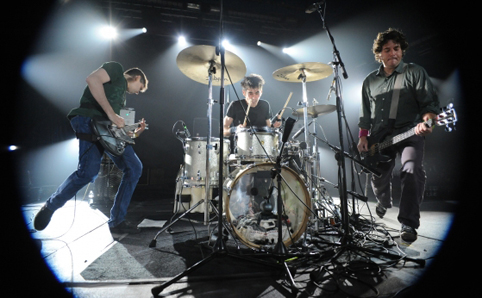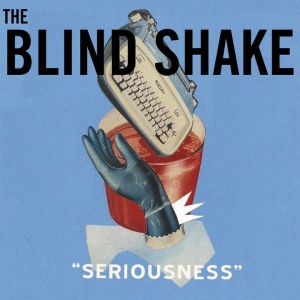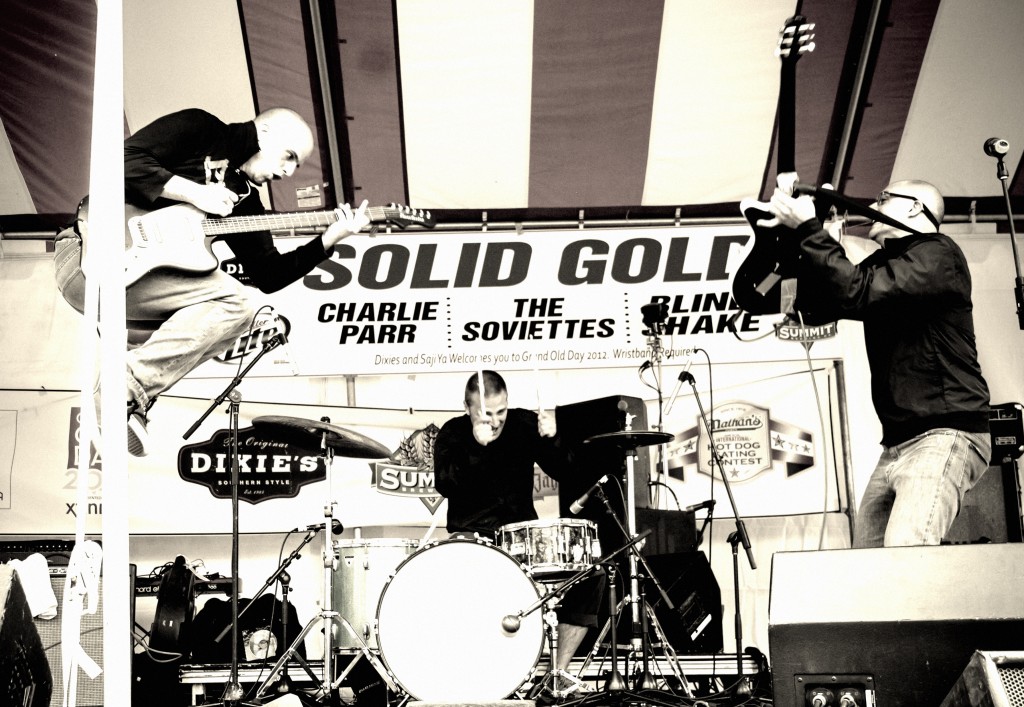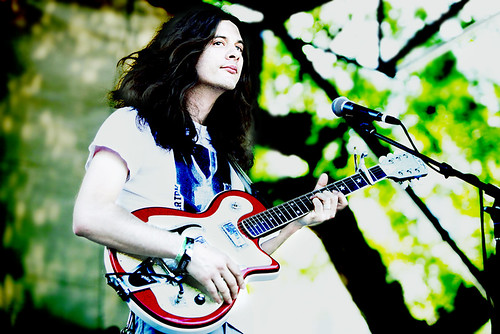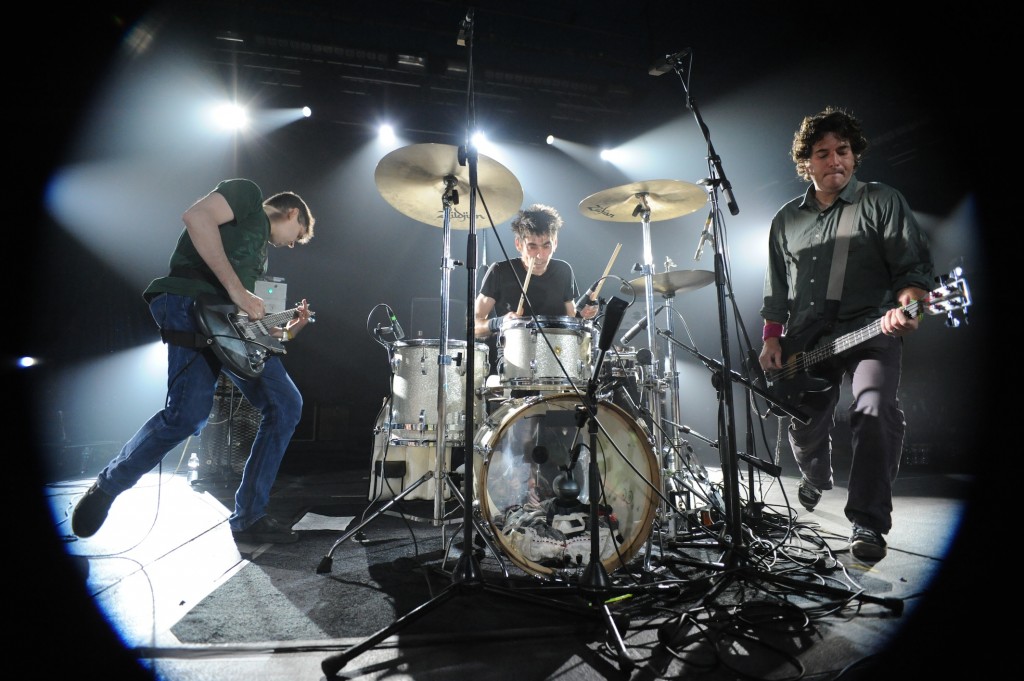
According to The Onion A.V. Club Steve Albini has stated that a new Shellac album has been recorded and will (hopefully) be released soon. Apparently, according to Albini, there are more songs finished than will appear on the new album. Out of the 10 songs that are finished 8 or 9 will appear on the band’s yet to be named follow up to 2007’s “Excellent Italian Greyhound.”
This is good news for Shellac fans, while at the same time news that will probably be ignored by everyone else. What I mean is that there are two kinds of music fans out there: those that are fans of Shellac (rabid, obsessive, die-hard fans of the Slayer ilk [and to that end, I would love it if people started yelling “SHELAAAAAAAAAACCC!!!” at each other when spotted on the street wearing a Shellac shirt]) and those that hate Shellac. I don’t think that I have ever met someone that just “sort of” likes them. They really aren’t that kind of band.
And the band really couldn’t care less what you think. That is the way that they operate. I don’t know why I am bothering telling you this because if you have read this far then you already know. And reviews of Shellac albums are irrelevant to Shellac fans. So the best I can do is just say “hey, a new album is on its way” and that will be as good as saying that it is the best album released this side of the industrial revolution. I will say, however, that I never developed a taste for “Excellent Italian Greyhound.” In my opinion the two longer tracks “The End of Radio” and “Genuine Lulabelle” (clocking in at 8:27 and 9:17, respectively) really sort of ruin the pacing. I’m much more a fan of “At Action Park” and “Terraform,” not to mention their newest album at the time I was introduced to them, “1000 Hurts.”
Keep an eye out for the new album sometime in the fall, or perhaps the winter, or maybe early next year. Just remember this is the band that held off releasing “Terraform” for (I think) a few years because they were waiting for the artwork to be just right.
The new album will be coming out on the barely-operating-what-the-hell-happened-to-this-amazing-label Touch and Go. I know that I’m looking forward to hearing that Shellac guitar tone. That is what really hooked me on the band in the first place, well that and this chord that appears in “Wingwalker” from their 1993 Uranus 7″, which is interesting for a few reasons.
First of all the song is in D minor, which could probably be explained simply enough in that most likely the guitar and bass have their low E strings tuned down a whole-step. More interesting, however, is the arpeggiated chord that appears over tonic:
The pitches are E-flat, B-flat, C-flat, G-flat in a simple arpeggiation that cycles through in 4/4 over the predominating 3/4 meter in the bass and drums, resulting in a cycling of the downbeat E-flat from beat 1 in the 2nd measure to the upbeat to 2 in the following measure and the middle of beat 3 in the next measure before the entire pattern is shifted down a whole step. This could be notated in 4/4 and the same cycling would (of course) occur. The main thing to note is that the E-flat quarter note in the guitar moves against the bass line and the beginning of both patterns only line up every 4 measures.
Listen to “Wingwalker” below. The arpeggiation in question can be heard at :57 – 1:15
If the chord that is alluded under this arpeggiation is tonic (we assume so, as the bass focuses on D) while the repeated E-flat cycles through the guitar making it a different focal point (in addition to the off-kilter rhythmic element), then what is even going on here harmonically speaking? An E-flat minor triad (E-flat, G-flat, B-flat [a half-step above tonic, played over tonic?!]) with an added C-flat is truly curious in this context. Within the chord itself it is the C-flat that really gives the chord its flavor, playing against the B-flat of the triad creating a minor-2nd that rings out between the G and B strings. This is typically a chord used more by jazz players than by rock guitarists. I think that, considering Albini is the dude that cut notches in his metal pick when he was playing in Big Black so that he could get a purposefully abrasive sound, the added 6th (and consequent minor 2nd ringing that occurs) is used more to obtain an abrasive and dissonant sound than toward any voice-leading or contrapuntal concerns.
This chord, if re-spelled, sounds (well…is) the same as a major-major 7 chord (C-flat, E-flat, G-flat, B-flat). You can think of this sonority as a major triad and a minor triad embedded in each other. The major triad (C-flat, E-flat, G-flat) and the minor triad (E-flat, G-flat, B-flat) therefore have identical intervallic content, but serve two very different purposes. It’s a deep subject, and not one that I intend to get into here. Though I will add one last tidbit: Albini must have also found something interesting in this chord because he uses the exact same chord 14 years later on the track “Boycott” from “Excellent Italian Greyhound.” The one difference is that in “Boycott” the chord appears over a B-flat in the bass. This means that there is, one could say, another (or at least a different) layer of dissonance at work here as the bass support isn’t all that supportive. The B-flat is, remember, one of the pitches that creates that unstable (dissonant) interval of a minor 2nd. This, of course, is not to mention that “Boycott” is nearly atonal in its construction, but that is a discussion for another day.
Hear “Boycott” below, and listen for the chord when it appears at :14-:24
So back to the song “Wingwalker.” We would normally think that the bass would support the chords, or arpeggiations or melodies that appear above it. For instance, if the bass is playing a D, and the song is in D-minor then one might safely assume that the chord over top could feasibly be tonic (D, F, A) or maybe the sub-mediant (VI = B-flat, D, F), or the subdominant (iv = G, B-flat, D)…or some other chord with an actual D in it. Instead, what we get is a chord that not only doesn’t contain the pitch that is supporting it, but the chord has pitches that clash with that supporting D. For example the E-flat is a half-step away, and the B-flat and C-flat create a split third sounding a major-third and a minor-third away from the D (though the C-flat would technically be an augmented 2nd, but is enharmonically equivalent, for those keeping track).
I haven’t even mentioned yet that an E-flat chord of any kind is not diatonic to the key of D-minor. Even if we consider it as a C-flat Major 7 chord instead of an E-flat minor add 6, there is still no C-flat anything in the key of D-minor. No matter how you spell the chord, or how you configure it, or what you consider a non-chord tone, there is no way to make this chord work in the context of D-minor.
It’s not some strange minor Neapolitan in root position with an added 6. This is for a few reasons: first of all, that’s just too odd, that never happens, and the reason that it never happens is because how would that chord even function? And speaking of function, a Neapolitan (normally a major chord built on the lowered 2nd scale degree, for those you that may not know) usually moves to the dominant, at least eventually. This chord moves to some other non-diatonic chord. The guitar never makes it to the dominant.
It’s definitely not a chromatic mediant of some sort. In order for that to happen you’d have to enharmonically respell the chord, which, fine, you can do that, I mean we are trying to look at all the possibilities here. Maybe it’s not C-flat Major 7, that is a bit odd, maybe it’s a B Major 7 chord. But if it was a B Major 7 chord that would mean in the context of D-minor it would be a Major 7 chord built on the raised 6th scale degree (#VI). No. Again, how would that function and that’s just too odd.
Lastly, what if we considered it as a secondary function? I mean, would it be satisfying by any stretch of the imagination to consider this chord as a Dominant chord with a Major 7 in the key of e minor (VM7/ii)? Well, no, because that would mean that the 7th of the chord would be the raised 4th scale degree, which would be some sort of Lydian mode type alteration.
This is all too complicated, and the purpose of music theory is to come to an understanding of how the music functions within its own context. This song, or at least this section of this song is not adhering to a tonal structure. It might be simpler to put this into the context of post-tonal analysis.
Remember how I mentioned above that the chords, no matter how you spelled them (either minor triad with an added 6, or a major triad with a major 7th) that they had the same interval content because they were the same pitches just in a different order? Well in tonal music the spelling of chords, and the classifications make all the difference. It’s all about the function of the chord. An altered pitch has a tendency, in the tonal sphere, to do certain things, to fulfill certain expectations. This leads to all sorts of great things like musical expectations and the thwarting of those expectations.
But how do we look at things if we find that the music is not functioning within a tonal realm; if these voice-leading tendencies are not considered in the context of the music? In that case we consider the similarities of the structures that are present in the music. Just like triads and 7th chords are used in the tonal language to contrast each other, collections of pitches that are built in a similar manner are used to give shape and meaning to non-tonal pieces.
Take for example a major triad. It consists of a note, a note a major-third above it and a note a minor-third above that. Now take a minor triad. It consists of a note, a note a minor-third above it and a note a major-third about that. So these major and minor chords have the exact same interval content, but in the context of a tonal composition they function differently, and because of other musical considerations (that are also within the context of tonal music) they sound different despite being essentially the same.
So let’s look at the chord: E-flat, G-flat, B-flat, C-flat. I will cut out all of the very laborious, confusing (you’re probably confused enough as it is) and complicated post-tonal theory stuff and you’ll just have to take my word on some stuff. That chord and the chord that follows in the example above, the final 4 measures where the chord simply shifts down wholesale a full step…because all of the pitches are moved the same distance, nothing about the intervallic content of the sonority has changed. It’s the same as moving, say, an A-major triad down a step to get a G-major triad; same exact content, different pitches.
Now, if we take all the pitches, including the bass: D, E-flat, G-flat, B-flat, C-flat and then after the guitar moves down a whole step: D, D-flat, A-flat, A, F-flat…well, there are ways of measuring the intervallic content. Perhaps I will return to exactly how that is done in another post, I don’t need to go on for another 1,000 words here. But, those chords, despite not functioning in a tonal context, are actually found to be, how we say in the trade, “maximally related.” This means that those collections of pitches have a lot of things in common in an intervallic sense. Basically, many of the puzzle pieces that fit together to form one chord can be taken out and fit into the other chord.
I think that in later posts I not only want to come back to some more post-tonal analysis of rock tunes, but I also would like to specifically investigate the way that Shellac’s “Boycott” is put together.
Thanks for reading this far. I know that this is all very confusing for those that are uninitiated into the world of music theory, but stick with me. I’m going to do my best to bring you up to speed and take the scariness out of it as best I can.



